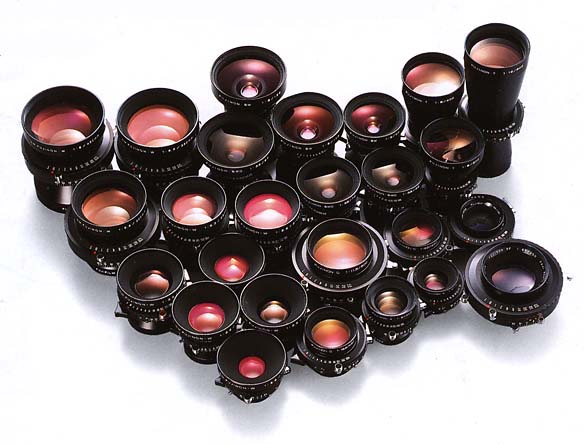Shenzhen Dehong Vision Technology Co., Ltd.
Phone: 137 2892 0823
Fax: 0755-2372-6873
Email: 908450505@qq.com
Website: www.dhkj123.com
en.dhkj123.com
Address: Goldman Sachs Building, No. 18 Shajing
Center Road, Baoan District, Shenzhen
The function of industrial lens is optical imaging. Industrial lens is an important component in machine vision system, which plays a key role in imaging quality. It has several major indicators of imaging quality, including: resolution, contrast, depth of field and various aberrations. Not only are there many types of industrial lenses, but the quality difference is also very large. However, when users design machine vision systems, they often pay insufficient attention to industrial lenses, resulting in failure to obtain ideal images and even system development failure.
I. Classification of Industrial Lens:
1, according to the size of the effective image field:
Can be divided into TV camera lens; movie camera lens, camera lens. The TV camera lens is divided into 1/4 inch, 1/3 inch, 1/2 inch, 2/3 inch, 1 inch and so on.
2, classified by focal length:
According to whether the focal length can be adjusted, it can be divided into fixed focus industrial lenses and zoom industrial lenses. Fixed focal length industrial lenses can be divided into four categories: fisheye lens, short focus lens, standard lens, and telephoto lens. The zoom lens can be divided into manual zoom and power zoom.

3. According to the type of industrial lens interface:
There are many different types of interfaces between industrial lenses and industrial cameras. Commonly used industrial cameras include C, CS, F, V, T2, Leica, M42, and M50 interfaces. The difference in the type of interface is not directly related to the performance and quality of the industrial lens, but the difference in the interface method. Generally, you can also find the interface between various commonly used interfaces.
The C interface and CS interface are the most common international standard interfaces for industrial cameras. They are 1-32UN inch threaded connections. The threaded connections of the C-type and CS-type interfaces are the same. The difference is that the rear intercept of the C-type interface is 17.5mm, CS type interface has a rear intercept of 12.5mm. Therefore, CS-type industrial cameras can be used in conjunction with C-mount and CS-port lenses, but a 5mm adapter ring is required when using C-mount lenses; C-mount industrial cameras cannot use CS-mount lenses.
接口 F-mount lens is the interface standard of Nikon lens, so it is also called Nikon port, it is also a type commonly used in industrial cameras. Generally, industrial cameras need F-mount lenses when the target surface is larger than 1 inch.
接口 V mount lens is the standard mainly used by the famous professional lens brand Schneider lens. It is also generally used for industrial cameras with larger target or special purpose lenses.
Other special purpose lenses:
Microscope, generally refers to the use of imaging systems with an imaging ratio greater than 10: 1, but because the pixel size of current industrial cameras has been within 3 microns, the general imaging ratio is also used when the ratio is greater than 2: 1 .
Macro lens generally refers to a specially designed lens with an imaging ratio in the range of 2: 1 to 1: 4. In the case that the image quality is not very high, the method of enlarging the close-up circle between the lens and the industrial camera or adding the close-up lens in front of the lens can be used to achieve the effect of magnified imaging.
Telecentric lens is mainly a lens specially designed to correct the parallax of traditional lenses. It can be within a certain range of object distance so that the magnification of the obtained image will not change with the change of object distance. The case where the measured objects are not on the same object surface is a very important application.
Ultraviolet and Infrared lenses are generally designed for use in the visible light range. Due to the difference in refractive index of different wavelengths of light by the same optical system, it cannot be used to image light of different wavelengths emitted at the same point. Converge to a point, producing chromatic aberration. The achromatic design of commonly used lenses is also aimed at the visible light range. Ultraviolet and infrared lenses are lenses specifically designed for ultraviolet and infrared.
2. Selection of industrial lens:
The lens is divided into a manual aperture lens and an automatic aperture lens according to the aperture. The selection is mainly based on whether the ambient light is stable. Generally, the manual aperture is used. Once the commissioning is OK, the automatic aperture lens (must be equipped with an automatic aperture lens) Industrial camera with aperture lens socket), so that the brightness of the picture can be adjusted automatically. The control signals for the auto iris lens can be divided into DC and VIDEO control, that is, DC voltage control and video signal control. This is in the selection of the type of auto iris lens, the connection method of the auto iris lens socket of the industrial camera, and the drive mode switch of the auto iris lens, which can be coordinated and coordinated.
When the lens specifications (lens specifications are generally divided into 1/3 ″, 1/2 ″, 2/3 ″, etc.), the relationship between the focal length of the lens and the angle of view of the lens is: the longer the focal length of the lens, the greater the The smaller the angle of field of view; when the lens focal length is constant, the relationship between the lens specification and the field angle of the lens is: the larger the lens specification, the larger the angle of view of the lens. With a fixed lens object distance, As the focal length of the lens becomes larger, the picture range becomes smaller, but the picture details become clearer. As the lens specifications increase, the picture range increases, but its picture details become increasingly blurred.
Fixed focal length: The focal length is fixed and can be divided into two types: aperture and non-aperture. With aperture: the size of the lens aperture can be adjusted. According to the change of ambient light, the size of the aperture should be adjusted accordingly. No aperture: fixed aperture, the light flux is fixed. It is mainly used when the light source is constant or the industrial camera has an electronic shutter. Zoom: The focal length can be adjusted as needed to make the image of the subject larger or smaller. The commonly used zoom lenses are six times and ten times zoom. Three variable lenses: adjustable focus, adjustable focus, adjustable iris. Two variable lenses: adjustable focus, adjustable focus, automatic aperture. Under the premise of a certain lens specification and lens focal length, the field of view angle of the CS-type lens will be greater than that of the C-type lens.
When the focal length can be fixed, a fixed focus lens is used. The lens has only a manually adjustable focus adjustment ring (the distance reference values are marked on the ring). Rotating the ring to the left and right can make the image on the CCD target surface the clearest At this time, the image obtained on the monitor screen is also the clearest. Manual zoom lenses are generally used in places where the requirements are more stringent and it is difficult to meet the requirements with fixed focus lenses. The zoom lenses should generally be consistent with the specifications of industrial cameras, or the lens specifications are larger than the camera specifications. All camera lenses are threaded. There are two industry standards for CCD camera lens mounting, namely C mount and CS mount. The threaded part is the same, but the distance from the lens to the photosensitive surface is different. C mount: The distance from the lens mounting datum to the focal point is 17.526mm. CS mount: The distance from the lens mounting datum to the focal point is 12.5mm. If a C mount lens is to be mounted on a CS mount camera, the gasket on the front of the camera should be removed before mounting the lens. Otherwise, a lens converter is required.

attention
Shenzhen Dehong Vision Technology Co., Ltd.
Phone: 137 2892 0823
Fax: 0755-2372-6873
Email: 908450505@qq.com
Website: en.dhkj123.com
Address: 19th Floor, Goldman Sachs Building,
No. 18 Shajing Center Road, Baoan District, Shenzhen
